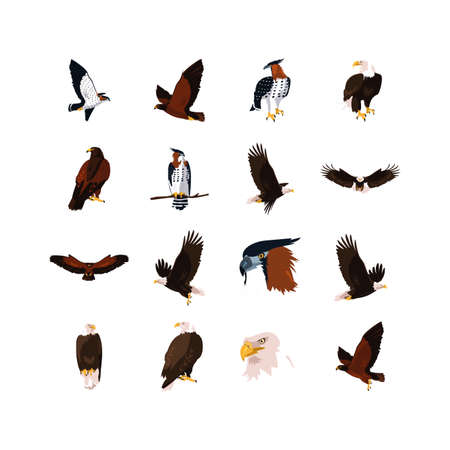1. Introduction – The Wild Heart of the UK
As dawn breaks over rolling emerald hills, a veil of mist lingers above dew-soaked meadows where the sharp eyes of a red fox catch the first light. Along windswept coasts, puffins gather on craggy cliffs, their colourful beaks bright against ancient stone. These moments—quintessentially British in their quiet splendour—remind us that the United Kingdom is not just home to centuries-old castles and bustling cities, but also to an astonishing wealth of wildlife. From secretive deer weaving through ancient woodlands to hedgehogs rustling beneath garden hedgerows, each creature is a vital thread in the country’s living tapestry. Observing these animals in their natural habitats brings a sense of wonder and belonging—a gentle reminder that we are only visitors in their wild world. Capturing these encounters without causing harm or distress is both a privilege and a responsibility; it allows us to celebrate the UKs natural heritage while preserving it for generations yet to come.
Choosing the Right Time and Place
Every corner of the UK is alive with nature’s rhythms, shifting subtly with the seasons. Understanding these cycles is essential for any wildlife enthusiast hoping to capture truly iconic moments, all while treading lightly on the land. In spring, ancient woodlands such as those found in Kent or the Forest of Dean awaken with dawn choruses; the air fills with song thrushes and blackbirds as the first light filters through bluebell carpets. Summer sees heathlands and meadows buzzing with dragonflies and butterflies, while autumn brings the powerful spectacle of deer rutting across royal parks like Richmond or the Scottish Highlands’ glens. Even in winter, coastal estuaries bustle with overwintering waders and wildfowl, their silhouettes stark against frosted mudflats.
To help you plan your wildlife outings and choose locations that resonate with authentic British character, here’s a quick guide to some lesser-known reserves and when to visit for unforgettable encounters:
| Season | Wildlife Spectacle | Recommended UK Spot | Local Flavour |
|---|---|---|---|
| Spring | Dawn chorus in ancient woods | Wistman’s Wood, Devon | Moss-draped oaks echoing with birdsong at sunrise |
| Summer | Butterflies & dragonflies on heaths | Suffolk Sandlings | Sandy paths lined with gorse, alive with fluttering wings |
| Autumn | Red deer rutting displays | Kielder Forest, Northumberland | Misty mornings reverberate with antler clashes and bellowing stags |
| Winter | Migratory waders gathering on estuaries | Mersey Estuary, Cheshire | Tidal flats teeming with curlews and godwits beneath wide skies |
By tuning into these natural calendars and seeking out less-travelled places—whether it’s an ancient mossy copse, a windswept moorland, or a tucked-away urban wetland—you’ll find both peace and inspiration. Not only do these settings offer quieter, more respectful encounters with wildlife, but they invite you to experience Britain’s landscapes as locals do: slowly, thoughtfully, and always mindful of nature’s gentle tempo.

3. Blending In – The Art of Discreet Wildlife Watching
There’s a gentle magic in the early morning mist along a Cornish headland or beneath the dappled shade of ancient bracken in the Lake District. To truly capture the wild heart of Britain without causing alarm, one must become part of the landscape itself. Begin by choosing clothing in soft, earthy tones—moss green, muted browns, and subtle greys—reflecting the rolling moors and woodland floor. These colours melt into the countryside, making you less of an intruder and more of a silent observer.
Moving quietly is an art form born from patience. Each step through tangled undergrowth or along rocky paths should be measured and deliberate. Let your feet seek out patches of moss or bare soil to muffle sound; avoid snapping twigs or rustling leaves which might send a wary red squirrel darting for cover or a badger retreating to its sett. Sometimes, it means pausing often, letting the wind carry away your scent and the ambient sounds settle back into their natural rhythm.
Positioning is every bit as crucial as silence. Always try to approach viewing spots from downwind—British wildlife like badgers possess keen noses that can detect unfamiliar scents on a breeze. Pause frequently behind gorse bushes or low stone walls, observing before moving forward. By blending in and respecting nature’s boundaries, you not only preserve these treasured moments but also honour the delicate balance that allows creatures like otters, hares, and deer to thrive across our patchwork countryside.
4. Essential Gear for the Responsible Wildlife Photographer
As any seasoned naturalist wandering the misty moors or ancient woodlands will tell you, the right gear shapes every moment in the wild. To truly capture iconic UK wildlife without disturbance, it’s vital to strike a balance between preparedness and sensitivity to your surroundings.
Binoculars: Observe from Afar
A sturdy pair of binoculars is an indispensable companion. With British landscapes often cloaked in morning fog or rain, quality optics allow you to spot elusive red deer across the Scottish Highlands or puffins along coastal cliffs—without stepping too close. Binoculars let you study animal behaviour quietly, ensuring your subject remains undisturbed.
UK-Standard Waterproofs: Weather-Ready Comfort
The capricious British weather demands serious waterproof gear. From drizzle in the Lake District to sudden downpours on Dartmoor, breathable, eco-friendly jackets and trousers keep you dry and comfortable. Choosing sustainable materials also lessens your environmental footprint, a nod to both tradition and modern responsibility.
Eco-Conscious Camera Choices
Selecting your camera with care matters—not just for image quality, but for environmental impact. Opt for brands known for ethical manufacturing and consider rechargeable batteries or solar-powered accessories. Using quieter shutters or mirrorless bodies minimises disturbance, letting you melt into the landscape like a gentle breeze.
The Power of Telephoto Lenses & Field Journals
| Gear | Benefits | UK-Specific Tips |
|---|---|---|
| Telephoto Lens (300mm+) | Allows detailed shots from a respectful distance; reduces risk of startling wildlife | Ideal for shy species like badgers, foxes, or nesting seabirds |
| Field Journal | Records observations, weather changes, and animal patterns | Captures the subtle shifts of British seasons; supports mindful photography |
Respecting Landscape and Legacy
Treading lightly is part of our cultural heritage—a respect passed down through rambles across heather-clad hills and ancient hedgerows. The right kit not only protects you from the elements but honours this tradition, enabling you to witness the quiet drama of nature without leaving a trace. Let each careful choice reflect your love for Britain’s untamed heartlands.
5. Respecting Wildlife and Local Habitats
Strolling through the British countryside, camera in hand, it’s easy to be swept up by the allure of a red deer grazing at dawn or the sudden flash of a kingfisher along a quiet river. Yet, as wildlife photographers, our presence leaves ripples—seen and unseen—in these delicate spaces. The essence of capturing iconic UK wildlife lies not only in patience and timing, but in the profound respect we show for the creatures and landscapes that welcome us.
Always maintain a respectful distance from animals; use your lens’s reach rather than your feet to get closer. Approaching too near can cause distress, especially during sensitive times such as nesting or rearing young. In Britain, nesting birds are protected by law and tradition—disturbing them is not only frowned upon but can have dire consequences for local populations.
Stick faithfully to marked footpaths. These winding trails aren’t just there for convenience; they’re carefully chosen routes designed to minimise our impact on fragile habitats, preventing trampling of wildflowers or rare insects underfoot. When you encounter gates, close them behind you—an age-old courtesy that keeps livestock safe and maintains harmony with local farmers.
The countryside code whispers gentle reminders: leave what you find, take only photographs, and tread softly. In this land of hedgerows and heather moors, the British ethos of ‘leave no trace’ prevails. Pack out all litter, avoid picking plants, and resist the urge to rearrange natural features for a better shot. By blending seamlessly into the rhythm of nature, we ensure our wild neighbours remain undisturbed for those who come after us.
In these moments—amid birdsong and bracken—you’ll find that true wildlife photography is less about possession than participation: bearing witness with care, reverence, and a light footprint on ancient ground.
6. The Real Reward – Capturing Stories, Not Just Images
Beyond the pursuit of a perfect shot, there lies a deeper magic in wildlife photography across the UK’s rolling hills and ancient woodlands. Each encounter with a red deer at dawn or a barn owl gliding over frosted fields is part of an unfolding story—a living thread woven through time and landscape. As you cradle your camera on a chilly Cotswold morning, hush settles around you and mist curls in the hedgerows, remember: the true reward is not merely in sharpness or composition, but in honouring the gentle narrative before you.
Let your lens linger on those subtle moments—a fox’s cautious glance, the hush of wings as dusk falls, or the breath of wind stirring bluebells beneath old oaks. The folklore of Britain hums quietly all around: legends whisper that hares can shape-shift under the moon, while robins are said to carry lost souls’ messages. These stories breathe life into your images; capturing them means observing patiently, letting each scene unfold without haste or intrusion.
The most memorable photographs often happen by chance. Perhaps it’s the fleeting shimmer of a kingfisher darting along a riverbank, or a stag pausing mid-step as frost sparkles at his feet. Such moments cannot be forced—they are gifts for those who wait with respect and wonder. By focusing on emotion and natural context, rather than simply ‘getting the shot’, you’ll create images that resonate long after they’re taken.
So next time you venture out—boots damp with dew, breath curling in morning air—let curiosity guide you. Embrace the serendipity and quiet drama that UK wildlife offers. In doing so, your photography will capture not just what is seen, but what is felt: echoes of myth, glimpses of wild heartbeats, and the enduring enchantment found in every corner of this storied land.


